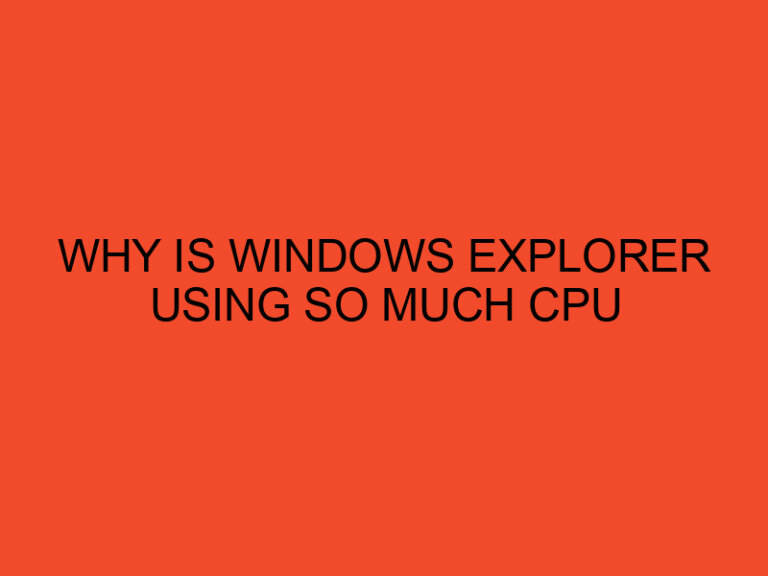In today’s world of ever-evolving technology, we often hear words like SoC and CPU core used interchangeably, especially in discussions regarding smartphones and other electronic devices. Although these terms are closely related, they are not the same. In this article, we will explore the differences between SoC and a CPU core, how they function, and their roles in electronic devices.
Table of Contents
difference between SoC and a CPU core
Before we dive into the differences between SoC and a CPU core, let’s understand what each term means.
What is SoC?
SoC stands for “System on a Chip.” As the name suggests, SoC is a single chip that contains all the essential components required to run an electronic device. SoC is commonly found in smartphones, tablets, and other small electronic devices. The chip integrates various components like the processor, memory, graphics card, and other peripherals onto a single chip.
Components of SoC
A typical SoC chip comprises the following components:
- CPU (Central Processing Unit)
- GPU (Graphics Processing Unit)
- Memory (RAM)
- Connectivity modules (Wi-Fi, Bluetooth, NFC, etc.)
- Input/output interfaces (USB, HDMI, audio jacks, etc.)
- Sensors (Accelerometer, Gyroscope, etc.)
- Power management unit (PMU)
What is a CPU core?
A CPU core is a single processing unit that executes instructions in a computer program. A CPU core is the most crucial component of a computer system responsible for carrying out all the processing tasks. A CPU core is also commonly known as a processor.
Components of a CPU core
A typical CPU core consists of the following components:
- Arithmetic and Logic Unit (ALU)
- Control Unit (CU)
- Registers
- Cache memory
SoC vs. CPU core
The main difference between SoC and a CPU core is that SoC is a single chip that integrates various components like the CPU, GPU, and memory, while a CPU core is just a processing unit that executes instructions in a computer program.
The SoC chip contains all the essential components required to run an electronic device. It is specifically designed for small devices like smartphones, tablets, and smartwatches, where space is limited, and power consumption needs to be low.
On the other hand, a CPU core is designed to execute instructions in a computer program. It is mainly found in desktop computers, servers, and laptops. A CPU core may be a part of a SoC, but it is not an SoC by itself.
SoC in smartphones
SoCs are commonly found in smartphones, tablets, and other small electronic devices. In smartphones, the SoC is responsible for carrying out all the essential tasks like processing, graphics, and memory management.
A typical smartphone SoC chip contains a CPU, GPU, RAM, connectivity modules, sensors, and a PMU. These components work together to provide a seamless user experience.
Advantages of SoC
The main advantages of SoCs are:
- Small size: SoCs are designed to be small, which makes them ideal for small electronic devices like smartphones, tablets, and smartwatches.
- Low power consumption: SoCs are designed to consume low power, which is essential for devices that run on batteries.
- Integration of components:
- SoC chips integrate various components onto a single chip, which makes them more efficient and cost-effective.
- Improved performance: The integration of components onto a single chip results in improved performance, faster processing speeds, and better power management.
Limitations of SoC
The main limitations of SoCs are:
- Limited upgradability: Since all the components are integrated onto a single chip, it is difficult to upgrade or replace individual components.
- Limited customization: SoCs are designed to be used in specific devices, which limits their customization options.
- Higher development costs: Developing an SoC chip requires a significant investment of time and money.
CPU core in desktop computers
In desktop computers, the CPU core is responsible for executing instructions in computer programs. The CPU core communicates with other components like RAM, storage, and graphics cards to carry out the processing tasks.
Advantages of CPU cores
The main advantages of CPU cores are:
- High processing power: Desktop CPUs are designed to provide high processing power to run complex applications and multitasking.
- Upgradability: CPUs are replaceable and can be upgraded to improve performance.
- Customization: Desktop CPUs offer a high degree of customization, allowing users to choose the CPU that meets their specific requirements.
Limitations of CPU cores
The main limitations of CPU cores are:
- Higher power consumption: CPUs consume more power than SoCs, which is not suitable for devices that run on batteries.
- Larger size: CPUs are larger than SoCs, which makes them unsuitable for small devices like smartphones and tablets.
- Higher cost: CPUs are more expensive than SoCs, which can increase the overall cost of the device.
Conclusion
In conclusion, SoC and CPU core are both crucial components of electronic devices. SoCs are ideal for small devices like smartphones, while CPU cores are better suited for desktop computers and servers. Both components have their advantages and limitations, and their selection depends on the device’s requirements.
FAQs
- Can an SoC chip be upgraded?
- No, it is difficult to upgrade or replace individual components on an SoC chip.
- What is the difference between a dual-core and quad-core CPU?
- A dual-core CPU has two processing units, while a quad-core CPU has four processing units.
- Are SoCs more power-efficient than CPUs?
- Yes, SoCs are designed to consume low power, making them more power-efficient than CPUs.
- Can a smartphone have a CPU core?
- Yes, smartphones can have a CPU core, but they are often part of an SoC chip.
- What is the most significant advantage of SoC chips?
- The integration of components onto a single chip results in improved performance, faster processing speeds, and better power management.





